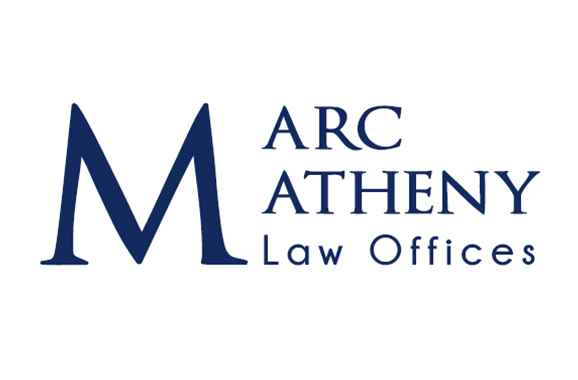Responsive Law Firm Websites
What is Responsive Law Firm Website Design?
Ensure Your Website Looks Great on All Devices
Responsive website design is a type of design whereby the information displayed on a screen adjusts to fit the monitor being used. The monitor size can range from large screen external monitors to notebook screens, to iPad and tablet screens, to mobile phone screens.
 With responsive law firm website design, the content in the code is typically arranged in “blocks” of content. When the content is displayed on a smaller screen (such as when the law firm site is displayed on a mobile phone or tablet), the content blocks are stacked on top of each other. In a larger screen, the blocks of content are then unstacked.
With responsive law firm website design, the content in the code is typically arranged in “blocks” of content. When the content is displayed on a smaller screen (such as when the law firm site is displayed on a mobile phone or tablet), the content blocks are stacked on top of each other. In a larger screen, the blocks of content are then unstacked.
As an example, an attorney profile that is displayed on a desktop computer may show an image of the attorney on the left-hand side of the screen, it may have a biography section about the lawyer in the middle of the screen, and the right-hand side of the screen may have content about the attorney’s admissions and education. When this content is displayed on a mobile phone, instead of having a very tiny version of this same layout, the attorney profile page might show the attorney’s picture at the top, followed by the bio section, then the section for the attorney’s admissions, followed by the attorney’s education.
If this page is displayed on a desktop or large screen monitor, and then the page is made narrower, a user can see exactly how the content is stacked and unstacked.
Learn More About Our Responsive Websites for Law Firms & Attorneys
What Other Changes are Required in Responsive Law Firm Website Development?
Additionally, in law firm responsive website coding, other changes are made as the screen size is reduced. For example, the navigation menu may change in the manner in which it is displayed. When viewed on a desktop or large screen monitor, the navigation may extend across most of the width of the screen. As the screen is made narrower, the navigation tabs will be closer together until the navigation changes to what is known as a “hamburger” menu.
What is a Hamburger Menu?
A hamburger menu is a menu that consists of three small horizontal lines and takes its name from the resemblance that it has to a hamburger. When a hamburger menu is clicked, the navigation links are then shown (usually in a vertical manner, instead of horizontally).
Is a Responsive Law Firm Website Design Right For Your Firm?
Most likely, yes.
In many cases, a responsive lawyer website design may be preferable to a “non-responsive” design, but this should be determined in consultation with an experienced law firm website developer. A responsive design should be taken into account at the outset of development so that if a responsive design is desired, aspects that may not work well in a responsive environment can be avoided in favor of other aspects.
Want More Information About Responsive Law Firm Websites?
Click one of the links below for more information about our custom and semi-custom websites and the ePRESQ™ platform:
Law Firm Responsive Website Development FAQs
The cost for law firm responsive website development is difficult to separate from the overall development cost because of several factors.
First, the responsive aspects are usually incorporated into the way in which the website is developed. In years past, developing a responsive website was much more difficult, as the design and coding had to be very carefully crafted. Today, most designers and developers use an open-source tool kit called Bootstrap to design and develop the responsive aspects of a website (other prototyping software can also be used). These software systems provide website designers and developers with the ability to design and see how the website will look on different types of monitors during the design stage. Because designers and developers now typically use Bootstrap and other prototyping software, the responsive element now is usually not considered an extra cost for the basic functionality.
Second, in addition to using such software, there are also differences in the design that may be desired depending on the type of monitor in which the website is viewed. For a responsive law firm website, it may be desirable to have buttons on the home page of the mobile site to “call the firm,” “get directions to the firm,” or to “send email” to the firm. Such buttons would only be displayed when the website is shown on a mobile phone (and not when the website is shown on a desktop).
Also, the “desktop” version of the home page of the website may have content that is not desired to be displayed when the firm’s website is opened on a mobile phone. Instead, the firm may wish to show a shorter version of the home page (perhaps by not showing news and events or similar content), which may enhance the experience for mobile users.
When additional content is added to a law firm’s mobile site or when some content will not be shown on the mobile site, extra coding is required. Normally, adding additional content for a mobile site, or not showing content, will usually only require a few hours or so of coding, so the cost should not be significant.
As mobile website developers with nearly two decades of experience, we define responsive law firm website design as a way to build websites that provide an optimal viewing and interaction experience. It means your law firm’s website will automatically adjust to fit any screen size, from desktop computers to tablets and smartphones.
The growing prevalence of mobile browsing makes responsive design critical. It ensures your website is accessible and user-friendly for visitors, regardless of the device they’re using. This is particularly important for law firms, as prospective clients often search for legal advice on the go.
Absolutely, yes! Search engines like Google prioritize mobile-friendly (i.e., responsive) websites in their search results. This is particularly true when searches are conducted on mobile devices. By using responsive design, we can help your law firm rank higher in search results.
With nearly two decades of experience, we’ve been at the forefront of responsive website design for law firms of all sizes. Our expertise ensures that your law firm’s website is not only modern and visually appealing but also fully responsive and search engine friendly.
At Esquire Interactive, we believe high-quality, responsive website design should be accessible to law firms of all sizes and budgets. Therefore, we offer a variety of website development plans tailored to meet your specific needs. Our packages start at only $3,000 plus hosting.
This cost-effective package is ideal for smaller law firms or solo practitioners looking to establish an online presence. It includes a professionally designed website built on one of our proprietary designs, optimized for both desktop and mobile viewing.
As your needs grow, we also offer more comprehensive packages, which include custom design elements, content creation, SEO enhancements, and advanced functionalities to deliver a more robust online presence.
Regardless of the package you choose, our team of experienced website developers is dedicated to creating a website that not only represents your law firm accurately but also provides an excellent user experience, helping you to attract and engage potential clients. Please reach out to us for more detailed information about our pricing and what each package includes.
Ready to
Get
Started?






